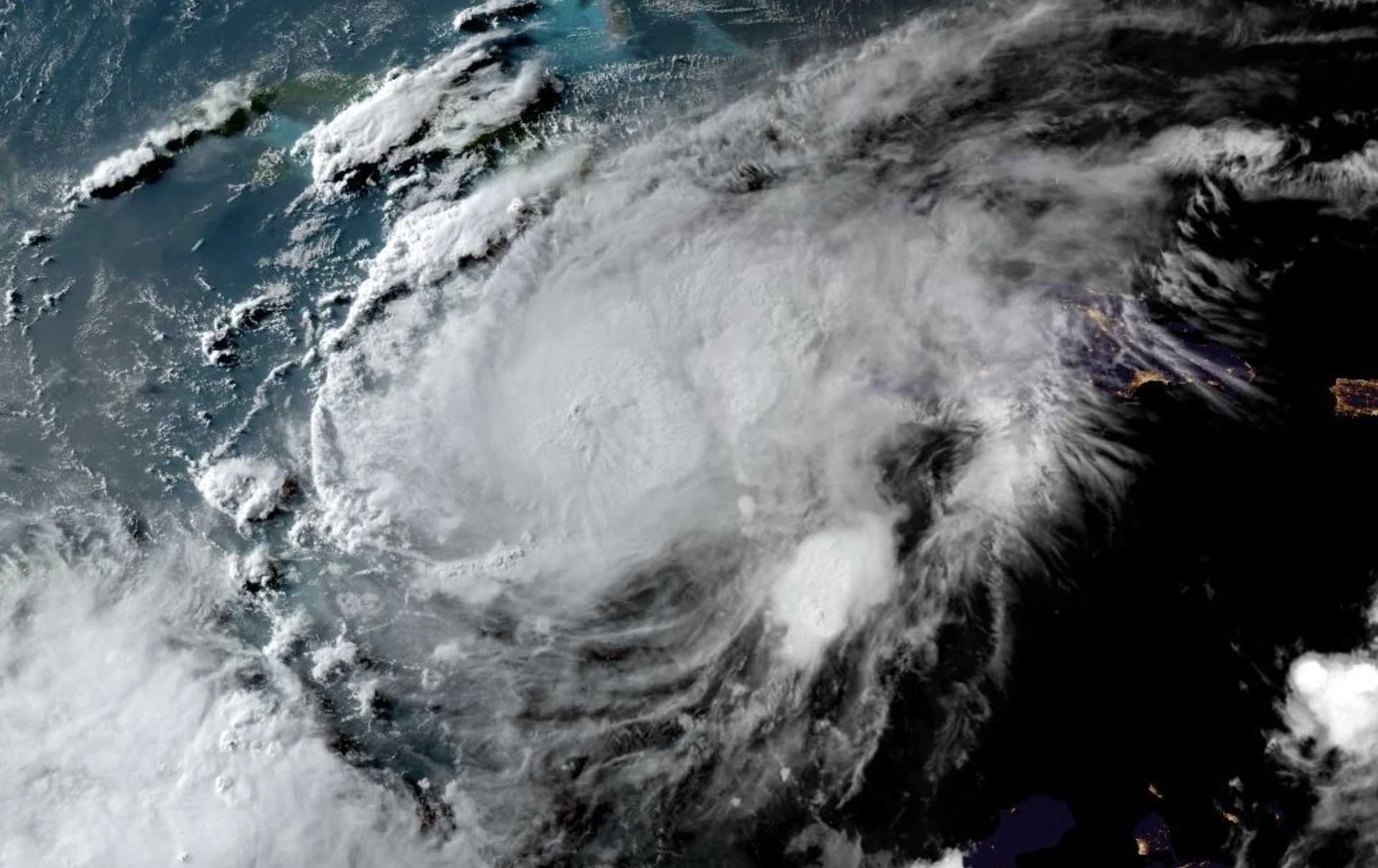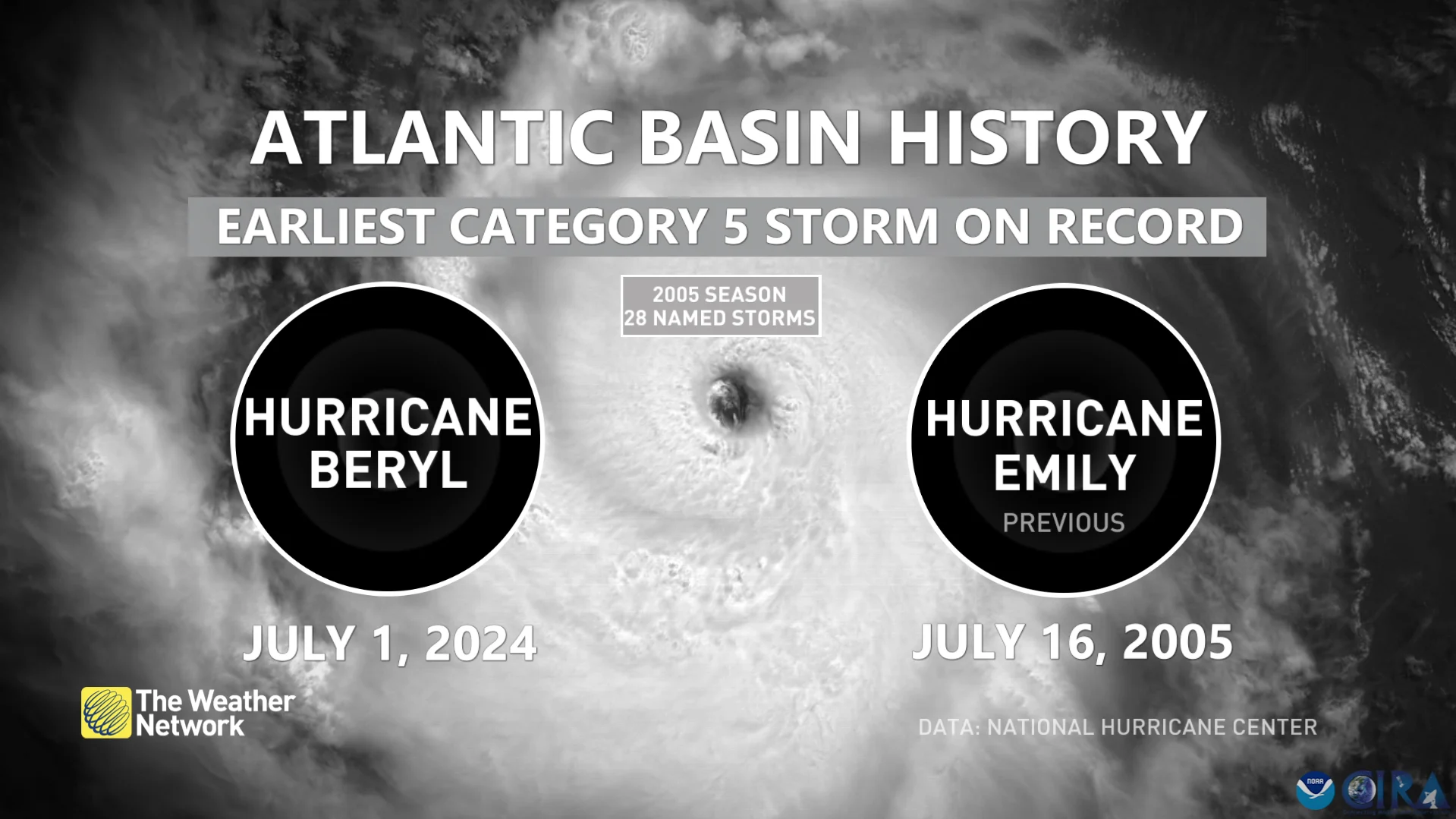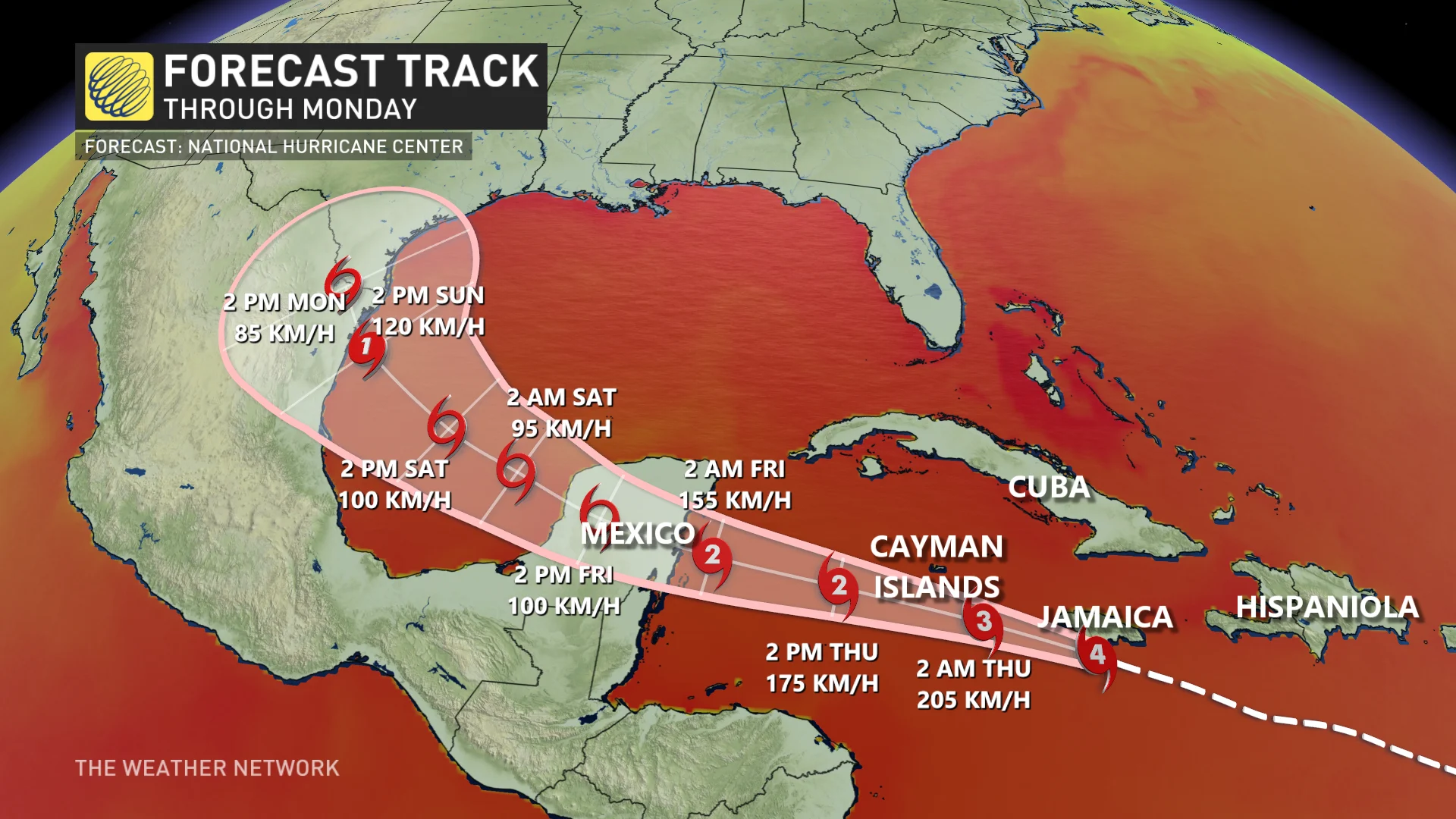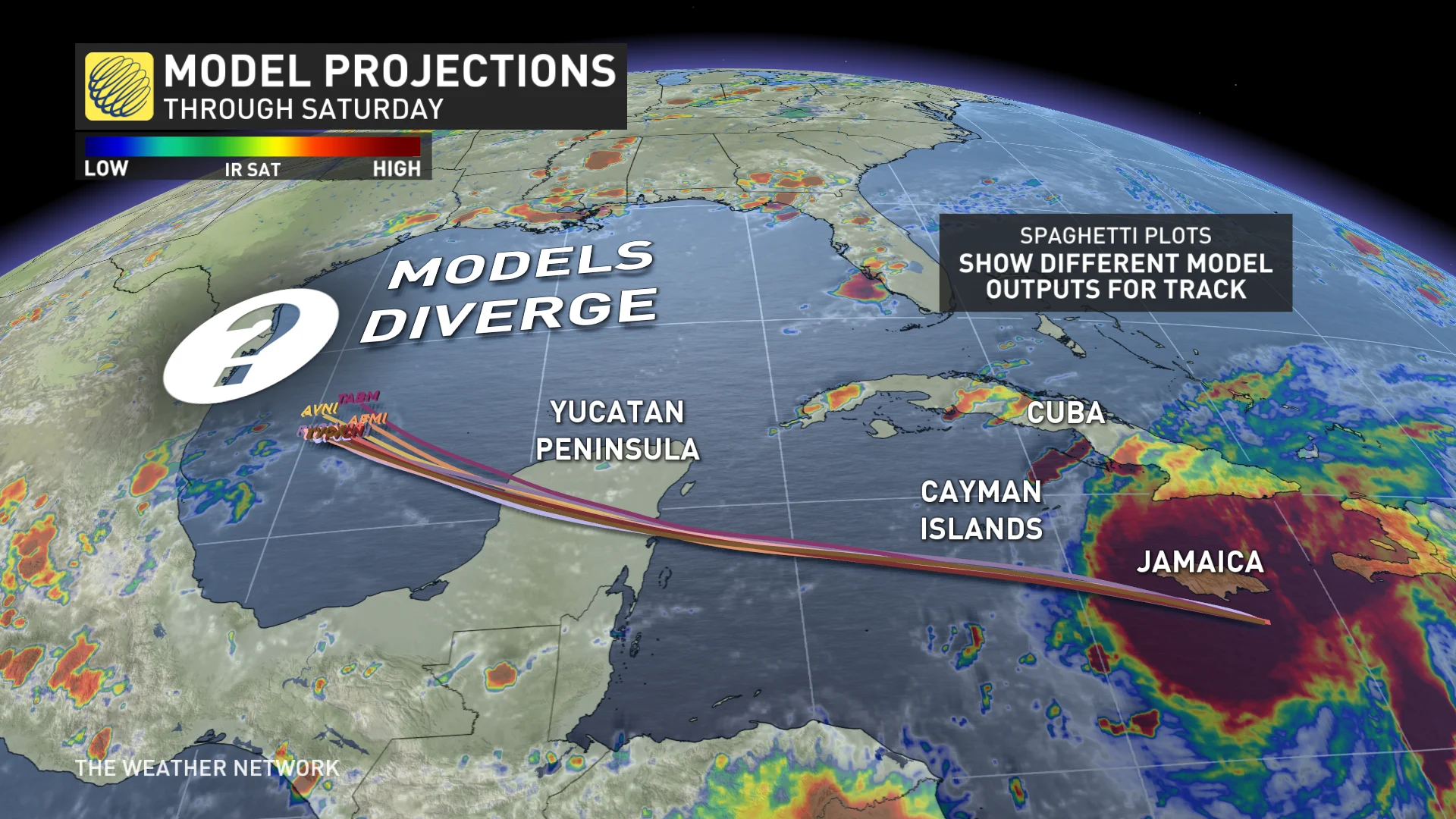
Deadly, destructive Hurricane Beryl churns westward with mighty strength
Hurricane Beryl, which remains a forceful, major storm after killing at least nine people, will soon approach the Cayman Islands before heading towards the Yucatan Peninsula Thursday night

The destructive, deadly impacts from the record-breaking, major Hurricane Beryl continue to expand after it brushed parts of Jamaica on Wednesday with powerful winds and storm surge.
At least nine people have been killed across the Caribbean as a result of the storm, according to media reports.
Check out The Weather Network’s hurricane hub for all the latest on the active hurricane season ahead
Now, the still-dangerous, Category 3 hurricane is on its way to the Cayman Islands shortly and will then reach the Yucatan Peninsula Thursday night, according to the U.S. National Hurricane Center (NHC).

Those who have a flight scheduled for in or out of Jamaica, the Cayman Islands or other destinations in the western Caribbean, along with the Yucatan Peninsula of Mexico, on Thursday or Friday should check with their airline about possible delays or cancellations.
Beryl marches west with destructive power
Beryl swirled into history on Sunday when its maximum winds rapidly intensified to Category 4 status, the earliest such storm ever recorded in the Atlantic.
The mighty storm has since then continued to break records, becoming the earliest storm to reach Category 5 status in the Atlantic and being the earliest major storm in the eastern Atlantic basin.

RELATED: Hurricane Beryl steams towards Cayman Islands, Mexico after striking Jamaica
Currently, a hurricane warning is in effect for Grand Cayman, and Little Cayman and Cayman Brac, as well as the coast of the Yucatan Peninsula of Mexico, from Puerto Costa Maya to Cancun.
A hurricane watch is in place for the coast of the Yucatan Peninsula of Mexico, south of Puerto Costa Maya to Chetumal, and the coast of the Yucatan Peninsula of Mexico, north of Cancun to Cabo Catoche.
Beryl’s winds continue to weaken, but it remains a major, Category 3 hurricane. Destructive winds, life-threatening storm surge, flooding and torrential rains are expected along Beryl’s path.

As of 5 a.m. EDT Wednesday, the NHC reported maximum, sustained winds near 195 km/h in its latest update.
Some weakening is forecast during the next day or two. However, Beryl is forecast to be at or near major hurricane intensity while it passes the Cayman Islands. Additional weakening is expected thereafter, though Beryl is forecast to remain a hurricane until it makes landfall on the Yucatan Peninsula.
SEE ALSO: It's not just your imagination, Atlantic storms are getting stronger faster
After passing over Jamaica, it is expected to pass near or over the Cayman Islands Wednesday night or early Thursday, and move over the Yucatan Peninsula of Mexico Thursday night or early Friday.
The track will take the core of Beryl over the Yucatan Peninsula late Thursday night and Friday. Beryl is expected to emerge over the southwestern Gulf of Mexico Friday night and turn northwestward.

Interests elsewhere in the northwestern Caribbean Sea and the western Gulf of Mexico, including southern Texas, should closely monitor the progress of Beryl, and heed the advice of local officials.
One of the region’s earliest storms on record
Beryl wouldn’t be out of place as a powerful hurricane in the middle of hurricane season, but it’s unheard of to have such a powerful storm this early in the year.
It was the earliest we’ve ever seen a hurricane form in the tropical Atlantic Ocean.
RELATED: Hurricane forecasts are better today than ever before—here’s how

The only other storms that formed this far east this early in the year were Hurricane Elsa in 2021 and an unnamed storm that hit Trinidad and Tobago in 1933. It’s worth noting that both 2021 and 1933 eventually ranked among the most active hurricane seasons on record.
Beryl is also the earliest Category 4 and 5 hurricane ever recorded in the Atlantic Ocean, beating by a week the record set by Hurricane Dennis back in 2005. The historic 2005 season saw Hurricanes Dennis and Emily peak at Category 4 and 5, respectively. Dennis reached major hurricane status on July 7, and Emily did so a week later.
The last time there was a major hurricane before the July 4th holiday was Hurricane Alma on June 8, 1966. Alma was also the earliest hurricane to make landfall in the U.S. since 1825.

Experts largely agree that we’re in for a very active Atlantic hurricane season in the weeks and months to come. Sea surface temperatures throughout the Atlantic are running several degrees hotter than normal, closer to what you’d expect in September than the end of June.
MUST SEE: El Niño is over—but La Niña may arrive during peak hurricane season
These abnormally hot waters will combine with the lower wind shear brought on by a developing La Niña in the eastern Pacific to foster extremely favourable conditions for tropical cyclone development through the peak of the season this fall.
The latest seasonal outlooks call for as many as two-dozen named storms, which is far more than the 14 tropical storms we’d see during a typical Atlantic hurricane season.
Thumbnail courtesy of the National Oceanic and Atmospheric Administration (NOAA).
Stay with The Weather Network for all the latest throughout hurricane season.










